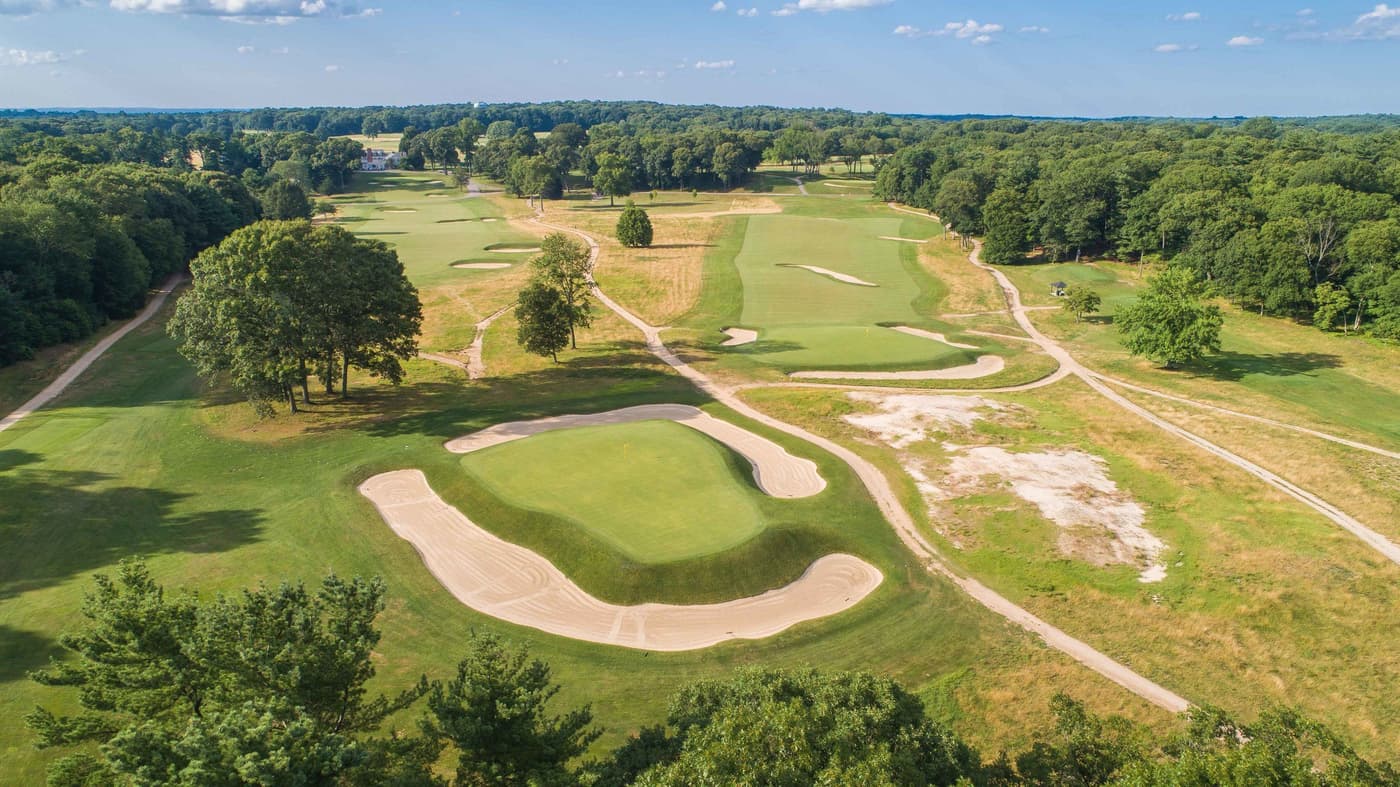- Courses
- North America
- USA
- New York

- Address150 Piping Rock Rd, Locust Valley, NY 11560, USA
Charles Blair Macdonald designed Piping Rock in 1911, with Seth Raynor managing the construction. Right from the off, Macdonald was up against fierce competition because polo was the sport of the day back then here at Locust Valley on Long Island.
Macdonald’s routing was forced around the polo fields and consequently the layout is perhaps less fluent than Macdonald would have liked. Nevertheless, Piping Rock is a masterful design which is maybe less well understood than it should be.
We have studied from cover to cover his masterpiece of golf literature, Scotland’s Gift, expecting to find reference to Piping Rock Club, but sadly nothing is mentioned. Clearly the polo fields were a sore point for America's first official golf champion and one of its greatest golf architects.
However, George Bahto dedicated a full chapter to Piping Rock in his authoritative The Evangelist of Golf: "The Piping Rock name was taken from a large stone located along the ancient trail between Glen Cove and Oyster Bay. Legend has it that Indian tribal leaders conferred and smoked their legendary peace pipes at this site."
"As they would eventually include in nearly all their designs," continues Bahto, "Piping Rock was built around the positioning of the par 3 holes. At National, Macdonald built only three par 3s – a 'Short,' 'Eden,' and 'Redan' – chiefly because he did not have a suitable site to showcase a fourth hole he had long admired. Here, he also included variations of the three, plus what is now identified as a 'Biarritz,' which added significant balance to the set of par threes."
Tom Doak commented in The Confidential Guide to Golf Courses as follows: "The golf is pretty strong, too, particularly after Pete Dye's renovation in the mid-1980s, which added several hundred yards to the course with room to spare. As with the 15th at St Louis Country Club, the top tier hole location on the par five 6th hole will move the scoring average by half a shot. You'll find many of the standard Macdonald/Raynor features here, but a novel addition is the snaky ridge that runs across the 15th green."
Tom Doak was the consulting architect here between 2008 and 2010 before the mantle was passed to his former Renaissance associate Bruce Hepner. In 2015 Hepner oversaw a tree removal programme, reinstated lost cross-bunkers and returned greens to their original sizes. This restoration was not about altering the original design, it was purely aimed at breathing forgotten life back into this priceless Mac/Raynor classic.
Course Reviews
Leave a Review
This course has not been reviewed.
If you have played this course, consider .
Thanks for the review
Your review has been successfully submitted and will be reviewed for approval.
Course Reviewed
You’ve already submitted a review for this course.
Course Architect
View All
In 1872, aged sixteen, Charles Blair Macdonald sailed across the Atlantic on a paddle steamer to live with his grandfather in St Andrews to study at the Auld Grey Toon’s University.



